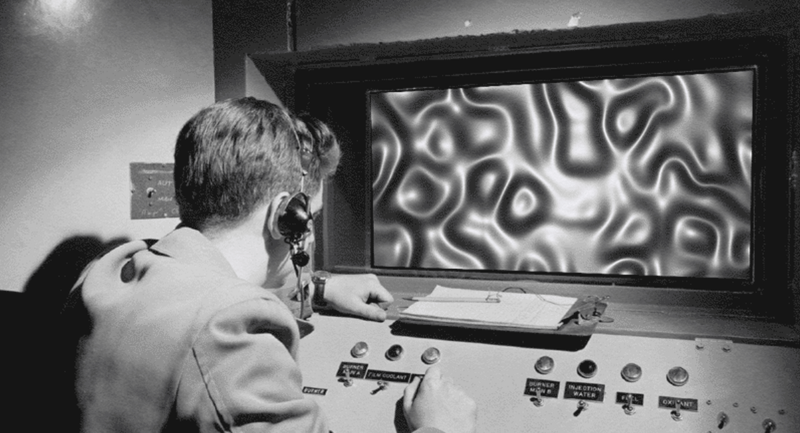If Dr. Alan Russell has his way, deep cuts will heal without any scarring and the blind will be able to see with their tongues.
Topic: The World of Regenerative Medicine
Russell: Regenerative medicine captures the body’s ability to heal itself and accelerates that to a clinically relevant time scale.
My name is Alan Russell and I direct the McGowan Institute for Regenerative Medicine at the University of Pittsburgh and UPMC.
Question: How can regenerative medicine revolutionize healthcare?
Russell: Within our body, we have many natural mechanisms which allow us to heal. But they just take place rather slowly and possibly not quickly enough to defeat a disease. If we can understand how the body communicates with itself at a very scientific and biologic basis, then we can learn to intervene in that discussion that the body is having and get it to steer a different course. So, for instance, if one gets a cut, the typical way that one would heal is to create a scar. Ourselves, in the region of the cut, would hear a number of signals that say, create a scar. Regenerative medicine is all about taking many different kinds of tools from lots of different kinds of disciplines and disrupting the normal way that the body heals but allowing it to heal in, perhaps a more natural way so that the end result is, for instance, a scarless healing process, where you get healing that creates natural tissue but not scar tissue.
Question: Why did you decide to specialize in it?
Russell: People, actually, are naturally excited by the idea of having a disease, a debilitating disease cured. So if you go to the doctor today, there are certain words which strike fear into your heart, cancer, diabetes, Alzheimer’s, Parkinson’s. These are words that alter the course of your life. But there are other words which don’t, you know, a sore throat, some kind of infection. Technology is what is being used in the past to diminish that fear because if we can invent new ways of treating disease, we can resolve very tragic outcomes. So, I think these things are exciting. Regenerative medicine is exciting because it really represents a rather new paradigm in how to deliver health to people who are challenged. And what we’re able to do with regenerative medicine is actually cure disease rather than treating symptoms. And that, just inherently, is very exciting to people.
Question: Can regenerative medicine aid in prevention?
Russell: If one rejects the idea of rationing healthcare to younger people and embraces the idea of trying to deliver healthy aging, one needs tools to do that. So, of course, one could think about things like organ transplant and you talked about machines and devices, the idea of machines and devices being used to support function but typically we think of those kinds of healthcare options as later on in the cycle of a disease. So, you know, we get sick. We get more sick. We get even more sick. And then, some incredible new technology comes along that can help us. Unfortunately, it’s often really expensive to deliver and it doesn’t always work so well and there are lots of side-effects. So this fascinating balance between early diagnosis and a set of tools that allow you to intervene early on and delay what, until then, was inevitable are very exciting. So early diagnosis and regeneration of function represent a new way of treating disease.
Question: Can regenerative medicine cure cancer?
Russell: There is a hypothesis, somewhat controversial, called the cancer stem cell hypothesis, that posits that many cancers are caused by stem cells that have gone wrong. So when we were growing up, when I was growing up and being taught about cancer in high school biology classes, I always got the sense that every cell inside a tumor was bad and equally dangerous. But it turns out that stem cell biologists that are focused on cancer have discovered that, actually, only a small percentage of cells inside a tumor are necessarily bad and have the ability to go somewhere else and create another tumor. And it’s that metastasis of cancer that really wreaks havoc for cancer patients. It turns out that those cells are probably stem cells. And they’re very, very similar to normal stem cells. So let’s think about the implications of that. Well, first of all, if it’s true, one implication is that if we go about trying to find drugs to treat tumors by looking for drugs which shrink tumor masses, we may miss the important drugs. Because if one in a million cells is bad and we just find the drug that gets rid of 999,999 cells and the drug doesn’t kill the one that’s bad, you know, we bought some time but we didn’t cure the disease. So people who do regenerative medicine are driven by the idea of curing a disease. So for cancer stem cells, what they’re interested in doing is, first, identifying them. Second of all, determining what’s their role in cancer. And then, lastly and perhaps most excitingly and most importantly, asking the question, how can we selectively destroy cancer stem cells so that they can’t wreak havoc by moving to another site and creating metastasis.
Question: Where is regenerative medicine going from here?
Russell: There's technology that’s come out at the University of Wisconsin is even more crazy to think about. But it appears that it has real potential. And there the issue is, let’s figure out a way to send the signal and let’s ignore the eyes completely. Let’s send a vision signal through the tongue. Now, we taste with our tongue and, obviously, we use it when we eat, right? And we’re not talking here about trying to convert vision into taste. We’re just saying that, you know what, the brain’s pretty smart and it should be able to distinguish what’s a vision signal and what’s a taste signal. So let’s take a set of electrodes and let’s embed them into some kind of, not permanent implant but just something that you can lie onto the tongue. You could think of one of those things that holds braces in place so could you put your tongue up against it. And imagine on that chip, were a whole host of tiny electrodes that were receiving signals from a camera. And then, you could ask the question, if the patient was to lie their tongue on that device or, say it was like a lollipop and they just put it in their mouth, will they see anything? And it turns out, they do. So the device is called the brain port. And you can go to YouTube and look at this extraordinary device. And they don’t see like you and I but what they do is they begin to be able to distinguish light and, for instance, on a computer monitor, they could begin to distinguish different letters from each other if the letter was big enough. So just imagine, in terms of restoring function, which is one of the central elements of regenerative medicine, in terms of restoration of function, what it would mean for someone who had no eyes to be able to lie their tongue on a device and then be able to walk around a room because all of a sudden, they could actually see—using the term in inverte commas—they could see roughly where different objects were.





